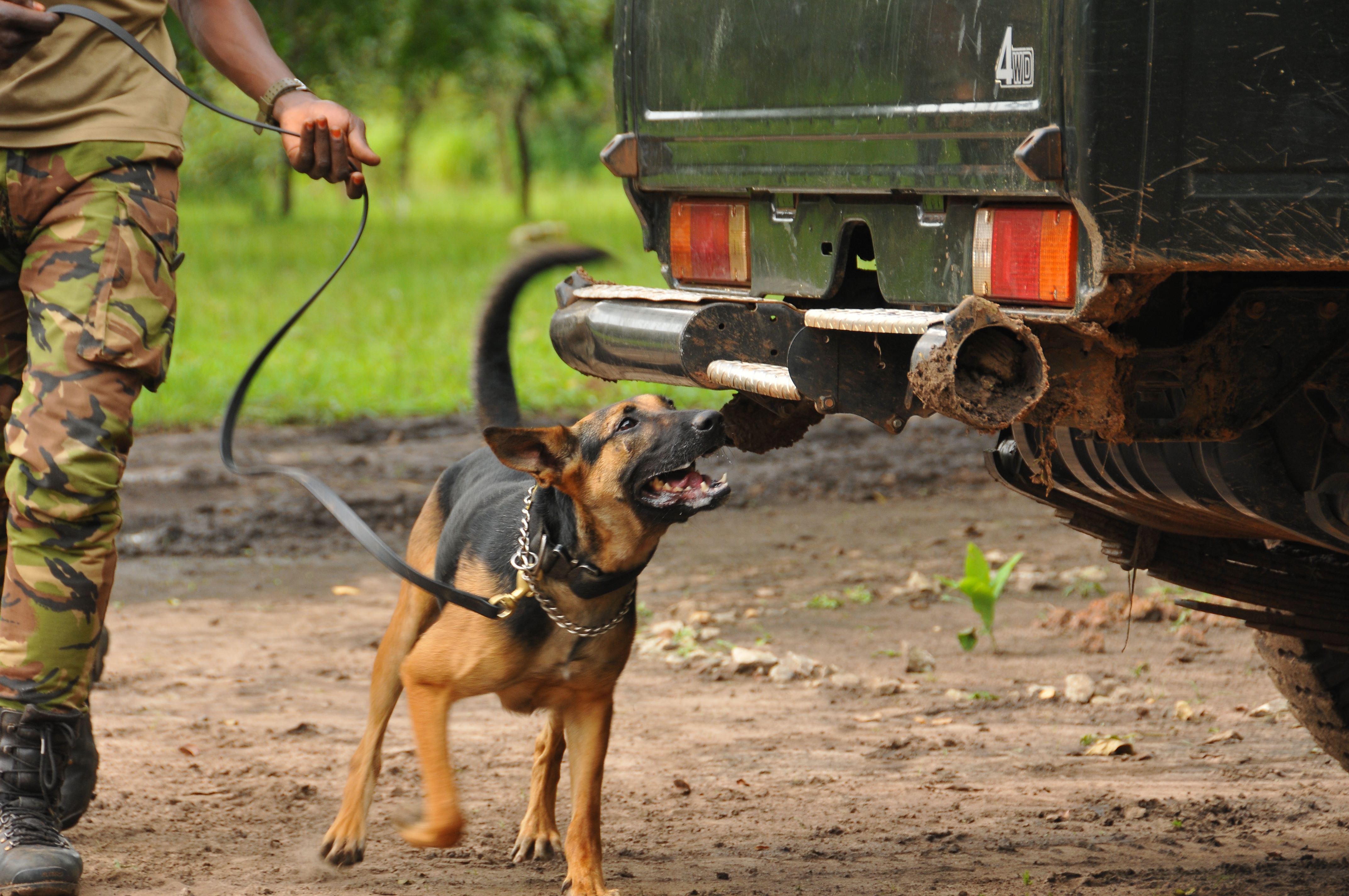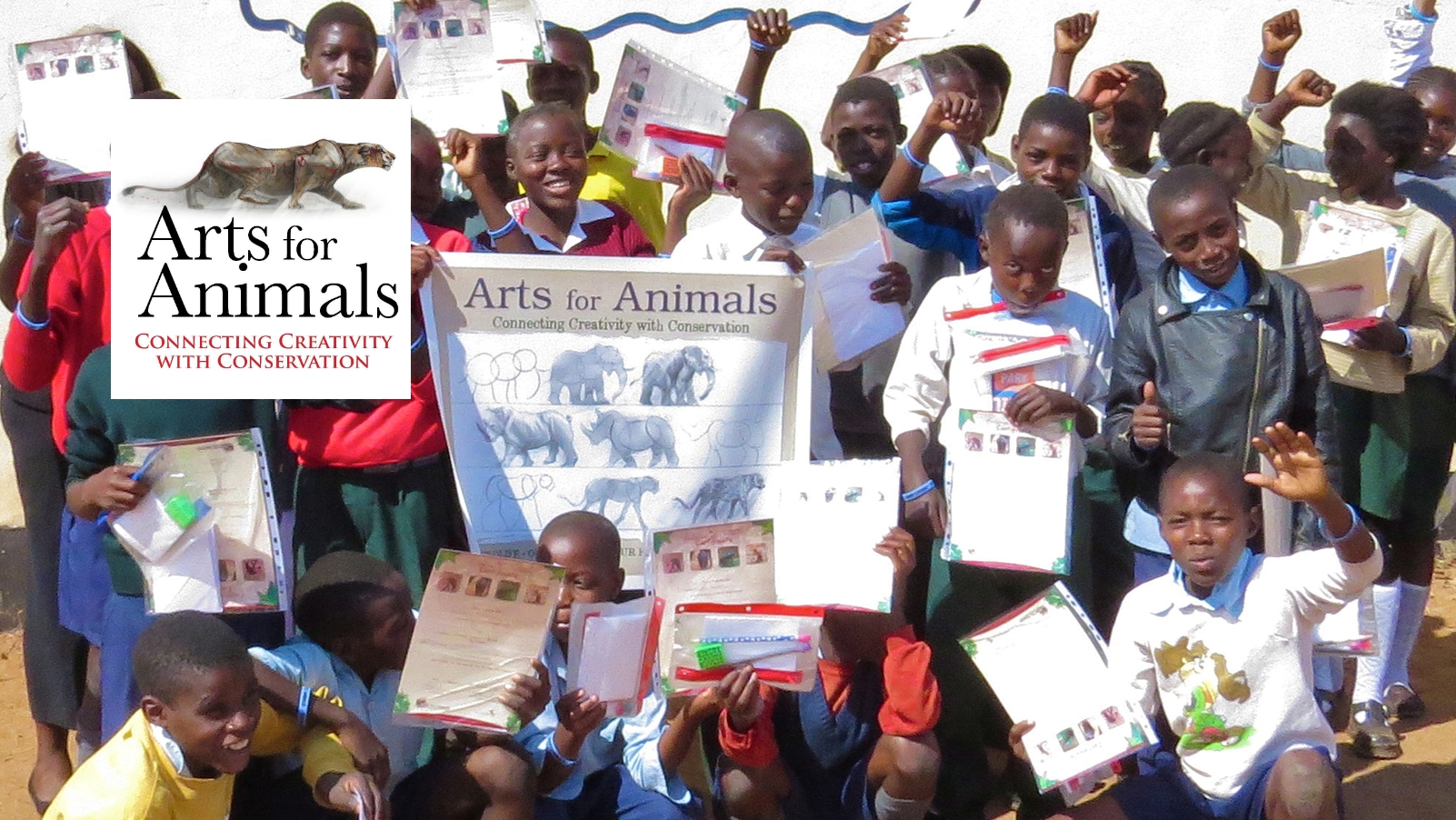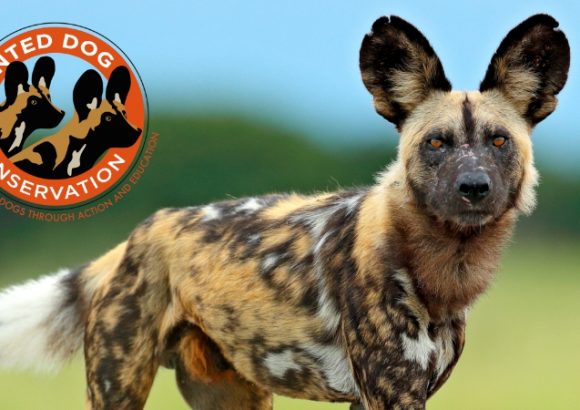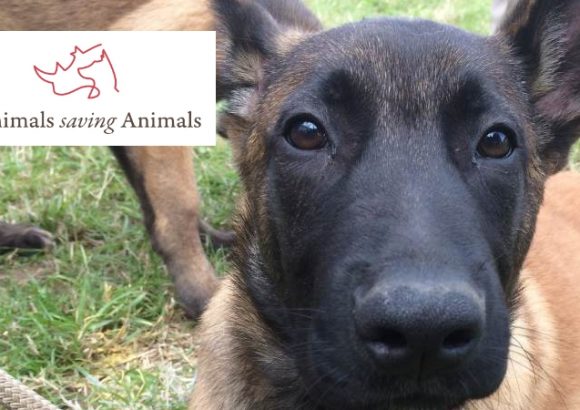Zimbabwe
Landlocked Zimbabwe offers breathtaking beauty and a true wilderness experience.
A safari in Zimbabwe is a dream for outdoor enthusiasts, enhanced by the country’s reputation for having Africa’s finest professional guides. These experts lead thrilling adventures, from face-to-face encounters with majestic bull elephants to canoeing adventures along the Zambezi River.
Zimbabwe’s celebrated wildlife regions offer something for everyone. Explore the exceptional game viewing in Mana Pools and Hwange National Park, experience remarkable water-based wildlife adventures in Matusadona along the tranquil shores of Lake Kariba, and be sure not to miss the booming spectacle of Victoria Falls.
For those with more time or drawn back to this captivating country, there is much to explore: the rugged landscapes of the Eastern Highlands on the border with Mozambique offer waterfalls and lofty peaks, while the ancient ruins of Great Zimbabwe are one of the most significant archaeological sites in Africa. In the southeastern lowveld, Gonarezhou National Park, known as ‘the Place of Elephants,’ with its towering red sandstone cliffs, offers a magical experience for those who venture off the beaten track to this remote wilderness
A country of immeasurable depth & beauty.
ZIMBABWE JOURNEY INSPIRATION
Our travel network specialises in tailormade holidays. Below you’ll find some examples, with price guide, using destinations and camps/lodges which we think work well together. There are many combinations possible so this is just to give you some initial ideas.
When you are ready to explore options more fully, please do complete an enquiry form – we can then put you in touch directly with the relevant specialist partner team. In discussion with you, they will tailor an itinerary based around your interests and your budget.
 This exciting safari begins at the world-famous Victoria Falls, before moving on to two contrasting safari areas in Zimbabwe.
This exciting safari begins at the world-famous Victoria Falls, before moving on to two contrasting safari areas in Zimbabwe.
First up is Zimbabwe’s largest park, Hwange National Park, known for its impressive concentrations of wildlife around waterholes or ‘pans’. Here, you can expect to see large herds of elephants, as well as lions, leopards, buffalo, and a diverse array of bird species.
Then it’s off to the remote and beautiful Mana Pools, which stretches along the Zambezi River. Mana Pools offers incredible wildlife sightings and a range of activities including walking and canoeing. The park is particularly famous for its elephants, especially the big bulls that are remarkably relaxed and can be approached on foot, as well as packs of wild dogs, which are fascinating to observe.
 Days 1-2: Batonka Guest Lodge, Victoria Falls
Days 1-2: Batonka Guest Lodge, Victoria Falls
Upon arrival at Victoria Falls International Airport, you will be greeted and transferred to Batonka Guest Lodge. Spend the rest of the day at your leisure, relaxing in the lovely leafy surroundings of your guesthouse. On the following day, embark on a guided tour of the magnificent Victoria Falls, the world’s largest curtain of falling water and a UNESCO World Heritage site. The appearance of the Falls varies dramatically with the seasons, influenced by rainfall. Explore the excellent walking trails and consider joining a boat trip or other guided activities to fully appreciate this natural wonder.
 Days 3-5: Wilderness Davison’s, Linkwasha Concession – Hwange National Park
Days 3-5: Wilderness Davison’s, Linkwasha Concession – Hwange National Park
This morning, you’ll transfer to Wilderness Davison’s Camp in the Linkwasha Concession, one of the most prolific wildlife areas in Hwange National Park. Over the next few days, enjoy guided bush walks with professional guides and game drives that explore the diverse landscapes of the park. Hwange National Park is a sanctuary for over 100 mammal species and 400 bird species. It is particularly famous for its large elephant herds, which can number up to 40,000 individuals. You will also have the opportunity to see African wild dog packs, large prides of lions, and herds of buffalo. The park is home to cheetahs, spotted hyenas, and, on rare occasions, the elusive brown hyena. Although there are no rhinos in the main park, efforts are ongoing to reintroduce them to a fenced sanctuary south of the park through the Hwange Community Rhino Conservation initiative.
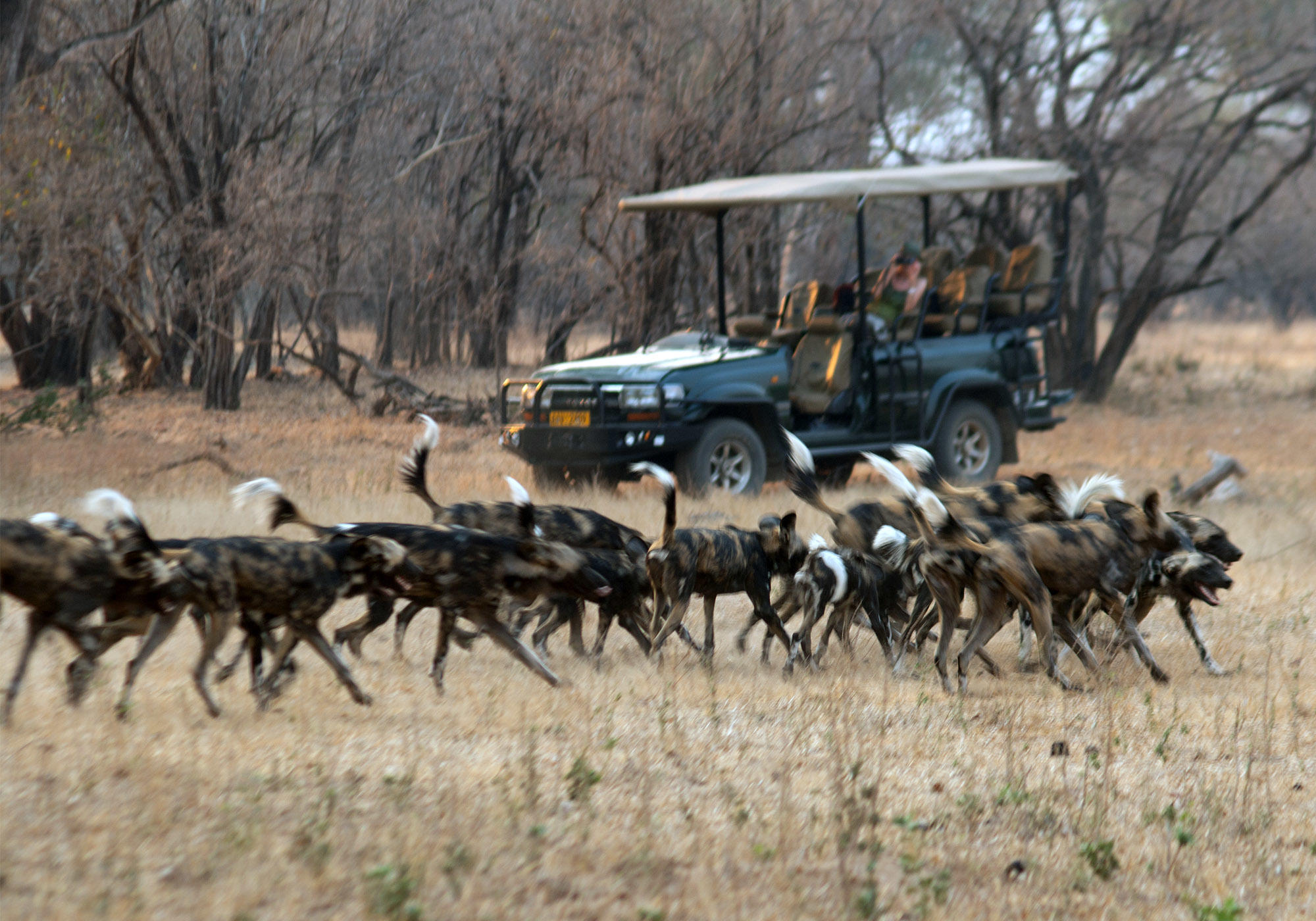 Days 6-8: Vundu Camp, Mana Pools National Park
Days 6-8: Vundu Camp, Mana Pools National Park
This morning, transfer to Vundu Camp in Mana Pools National Park. Over the next few days, you will enjoy a variety of activities including guided game drives in open 4×4 vehicles, safari walks, and canoe safaris. Mana Pools, nourished by the life-giving Zambezi River, is one of Zimbabwe’s most enchanting wildlife areas. Canoe trips are available year-round, offering a unique and memorable way to experience the area’s striking scenic beauty and diverse fauna. Guided walks provide an excellent opportunity to explore the pristine riverside forests and observe wildlife up close. Mana Pools is renowned for its vibrant ecosystem, making it an ideal destination for nature enthusiasts.
 Day 9: End of Arrangements
Day 9: End of Arrangements
This morning, you will be transferred to the airport for your flight home, concluding your unforgettable safari adventure.
Price Guide
Per person sharing: from £5,870 (based on mid season)
- This itinerary is available May to October.
- This trip starts in Victoria Falls and ends in Harare.
Includes
- All domestic flights, airstrip transfers and departure taxes
- Park & conservancy fees
- All game activities
- Full board accommodation with house drinks (on safari); bed & breakfast (Victoria Falls)
International Flights Our partners can book international flights for you as required.
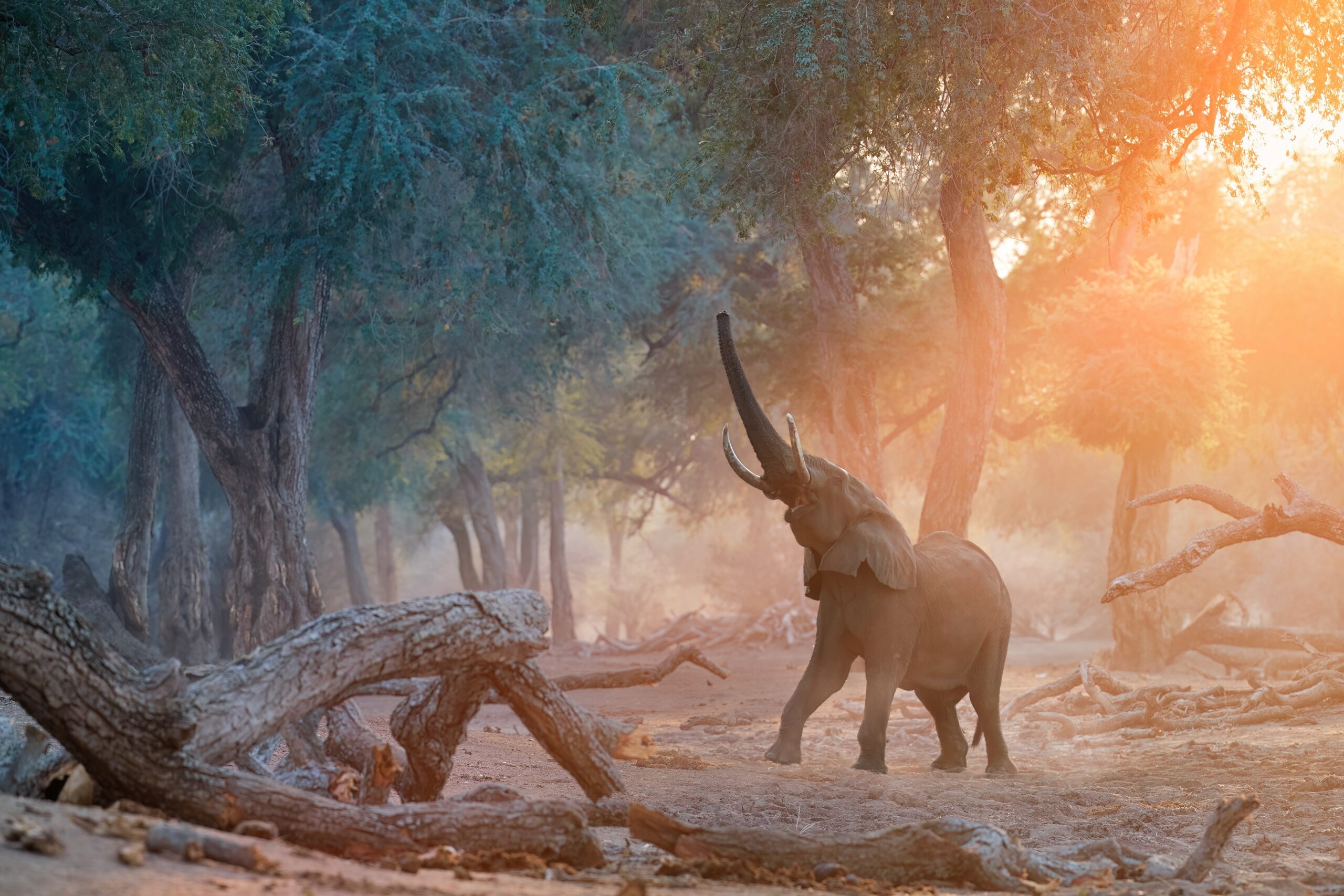 This special journey begins at Victoria Falls, where you can hear the mighty roar of the falls from your lodge, just an eight-minute walk away.
This special journey begins at Victoria Falls, where you can hear the mighty roar of the falls from your lodge, just an eight-minute walk away.
Your adventure continues with a safari in Hwange National Park, situated in the far west of Zimbabwe on the border with Botswana. Known for its exceptional wildlife, Hwange offers some of the best game viewing in the country. The park is surrounded by community lands, providing a unique opportunity to learn about the intricate balance of human and wildlife co-existence.
Next, you fly northeast to the pristine wilderness of Mana Pools on the Zambezi River. Over the following three nights, immerse yourself in the breathtaking landscape, exploring on foot, in vehicles, and by boat.
This itinerary highlights Zimbabwe’s diverse parks and reserves, each showcasing unique topography and wonderful properties.
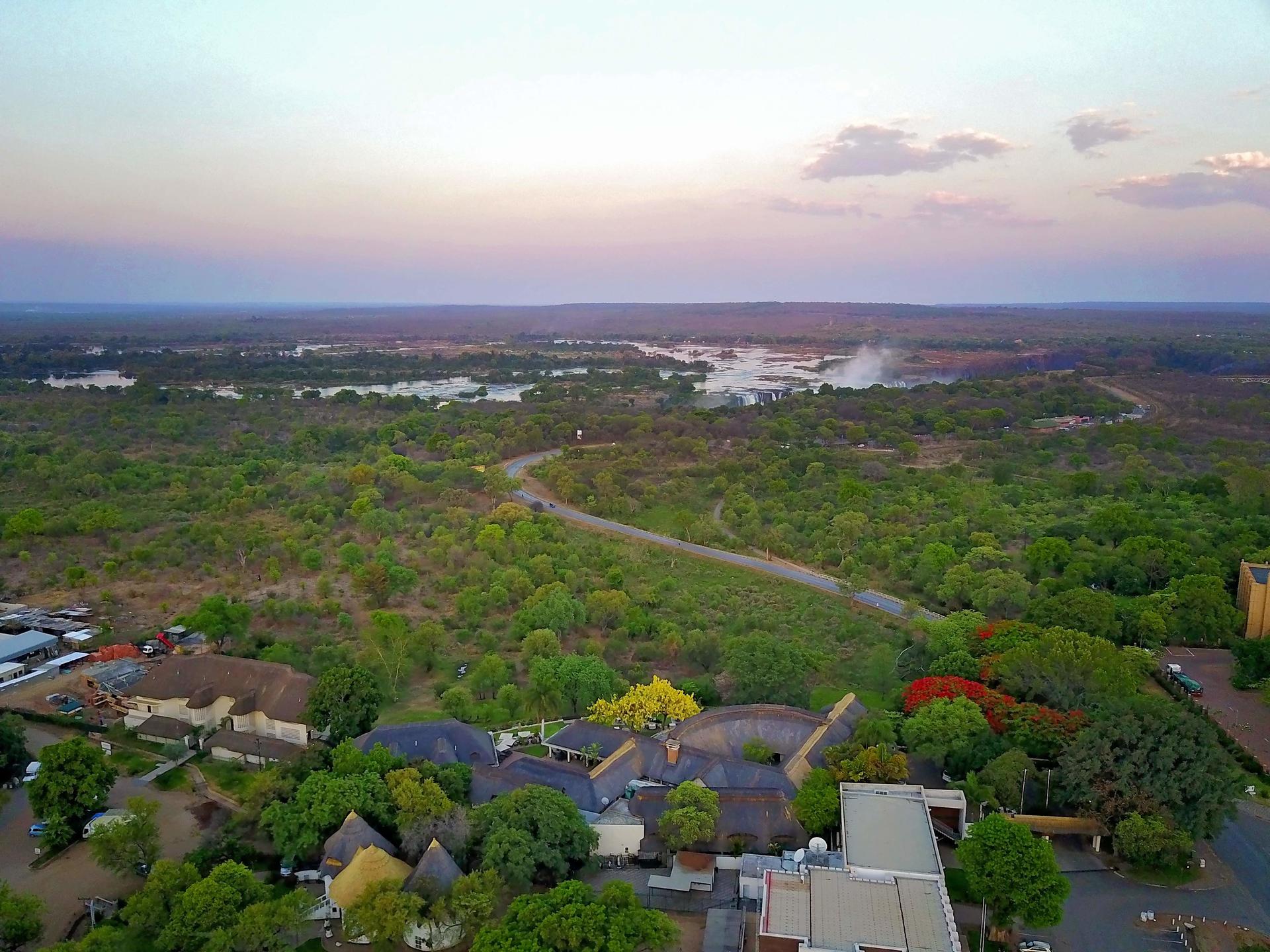 Days 1-2: Ilala Lodge, Victoria Falls
Days 1-2: Ilala Lodge, Victoria Falls
Upon arrival at Victoria Falls International Airport, you will be met and transferred to Ilala Lodge. The rest of the day is at your leisure, allowing you to relax and enjoy the surroundings.
On the following day, embark on a guided tour of Victoria Falls, a UNESCO World Heritage site and the world’s largest curtain of falling water. The falls offer breathtaking views and a range of walking trails that allow you to explore this natural wonder. Additionally, you can choose from various boat trips and guided tours to further enhance your experience of this spectacular location.
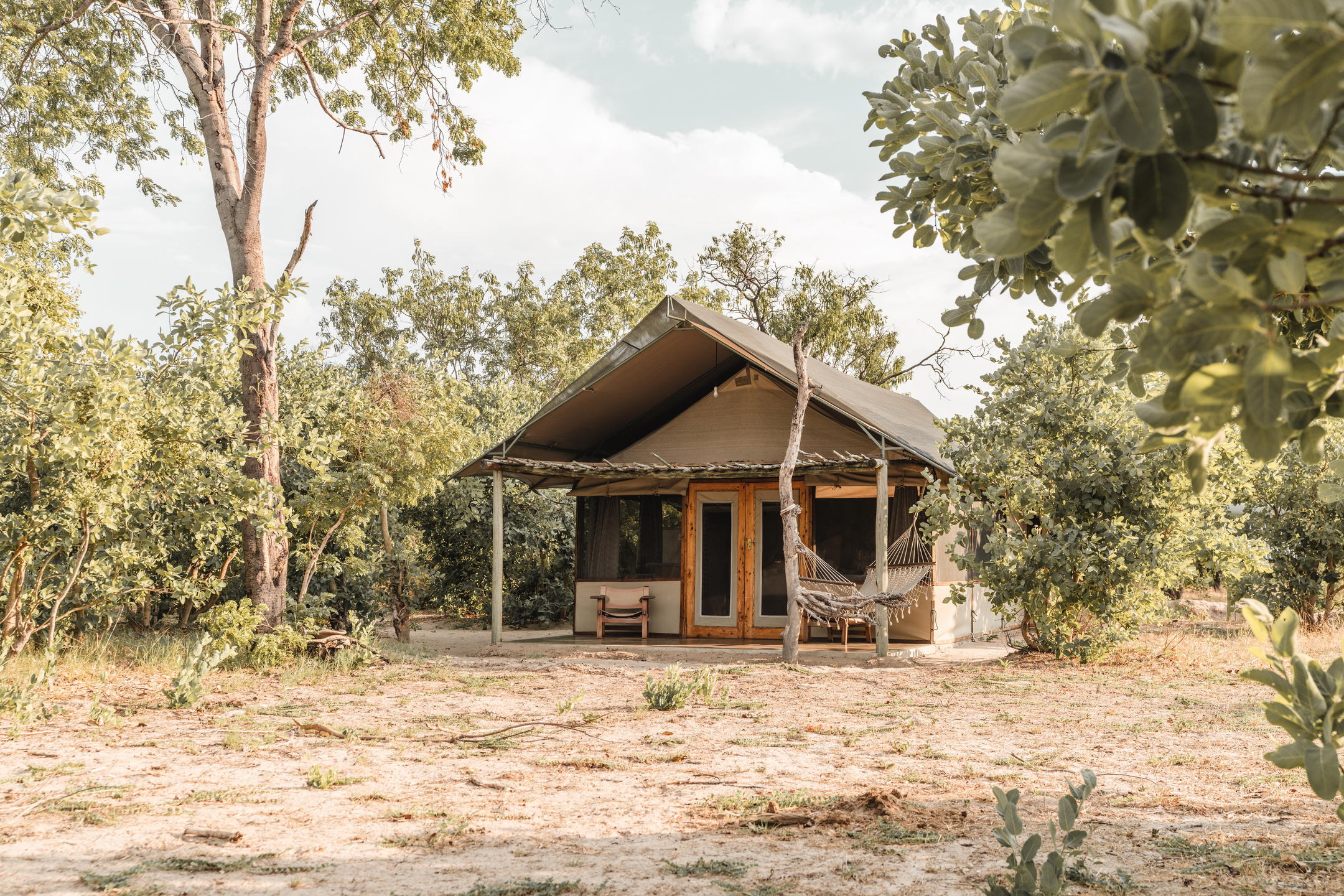 Days 3-5: Little Makololo – Hwange National Park
Days 3-5: Little Makololo – Hwange National Park
This morning, you will transfer to Little Makololo in the heart of Hwange National Park within the Linkwasha Concession. Over the next few days, you will enjoy a variety of activities, including guided bush walks with qualified professional guides and game drives through the diverse landscapes of the park. Hwange National Park is home to over 100 mammal species and 400 bird species. The park is a sanctuary for all of Zimbabwe’s endangered species, with elephant populations exceeding 20,000, up from around 4,000 when the park was first established. It also boasts one of the largest populations of African wild dogs in the world. Visitors frequently encounter large prides of lions and herds of buffalo. There’s also a good chance of spotting elusive predators such as leopard, cheetah, and spotted hyena. Additionally, the park is home to the rare brown hyena, a species that is seldom seen elsewhere.
 Days 6-8: Little Ruckomechi, Mana Pools National Park
Days 6-8: Little Ruckomechi, Mana Pools National Park
This morning, transfer to Little Ruckomechi in Mana Pools National Park. Over the next few days, you will immerse yourself in the park’s rich wildlife and stunning landscapes enjoying a variety of activities. Mana Pools, nourished by the life-giving waters of the Zambezi River, is one of Zimbabwe’s most verdant and thriving regions. Designated as the country’s second World Heritage Site, it is renowned as one of the continent’s premier game-viewing destinations. Year-round canoe trips offer a unique and unforgettable way to explore the park’s striking scenic beauty and diverse wildlife. Guided walks provide an intimate experience of Mana Pools’ pristine riverside forests, allowing you to connect closely with nature and its inhabitants.
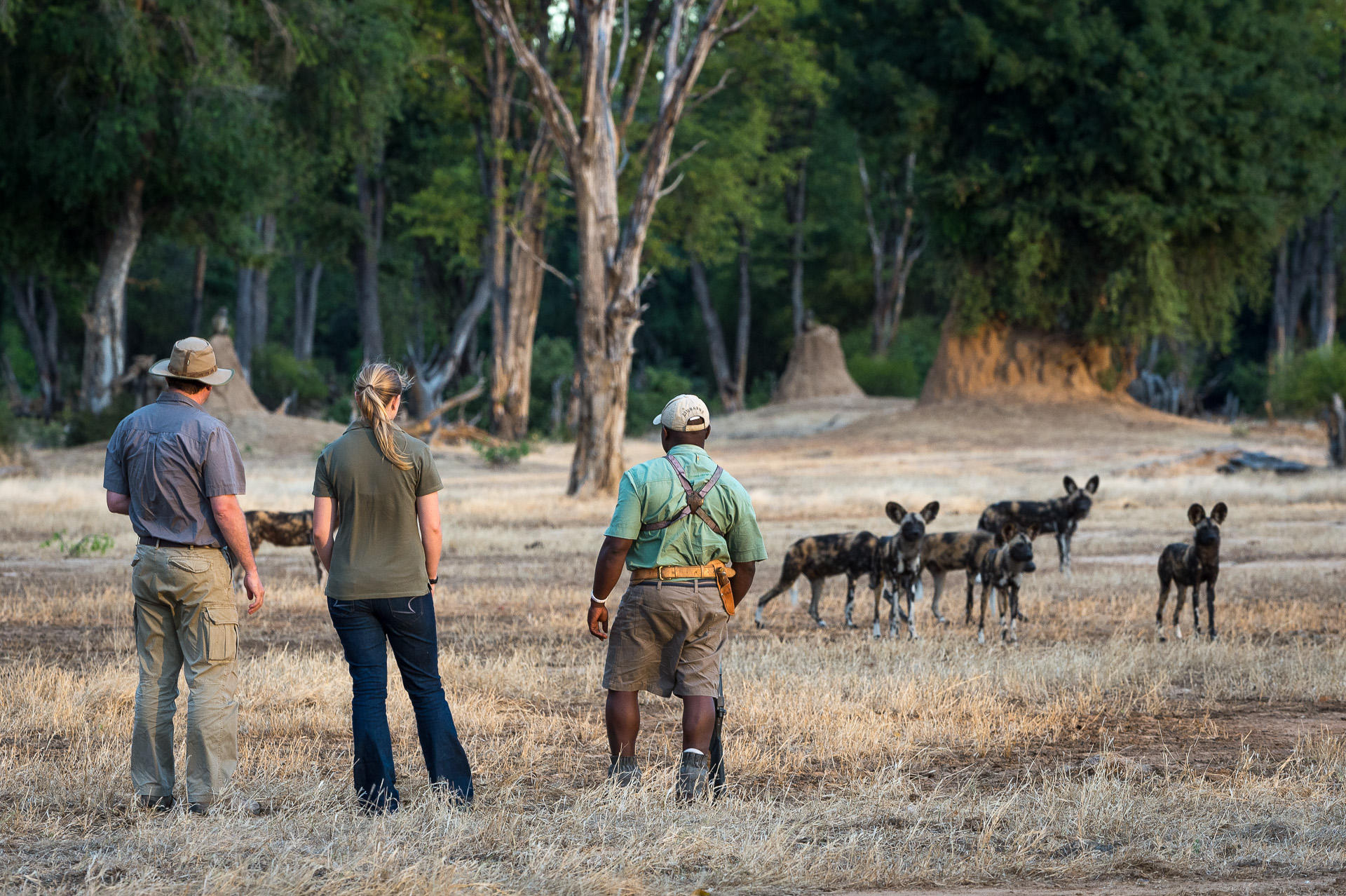 Day 9: End of Arrangements
Day 9: End of Arrangements
This morning, you will be transferred to the airstrip for your onward journey, concluding your memorable safari adventure in Zimbabwe.
Price Guide
Per person sharing: from £6,715 (based on mid season)
- This itinerary is available May to October.
- This trip starts in Victoria Falls and ends in Harare.
Includes
- All domestic flights, airstrip transfers and departure taxes
- Park & conservancy fees
- All game activities
- Full board accommodation with house drinks (on safari); bed & breakfast (Victoria Falls)
International Flights Our partners can book international flights for you as required.
ZIMBABWE GUIDE
You’ll find a short guide to Kenya below.
To start planning a trip to Kenya please contact us via the Enquiry Form, by email on info@realworldconservation.org.uk or on 01692 218189.
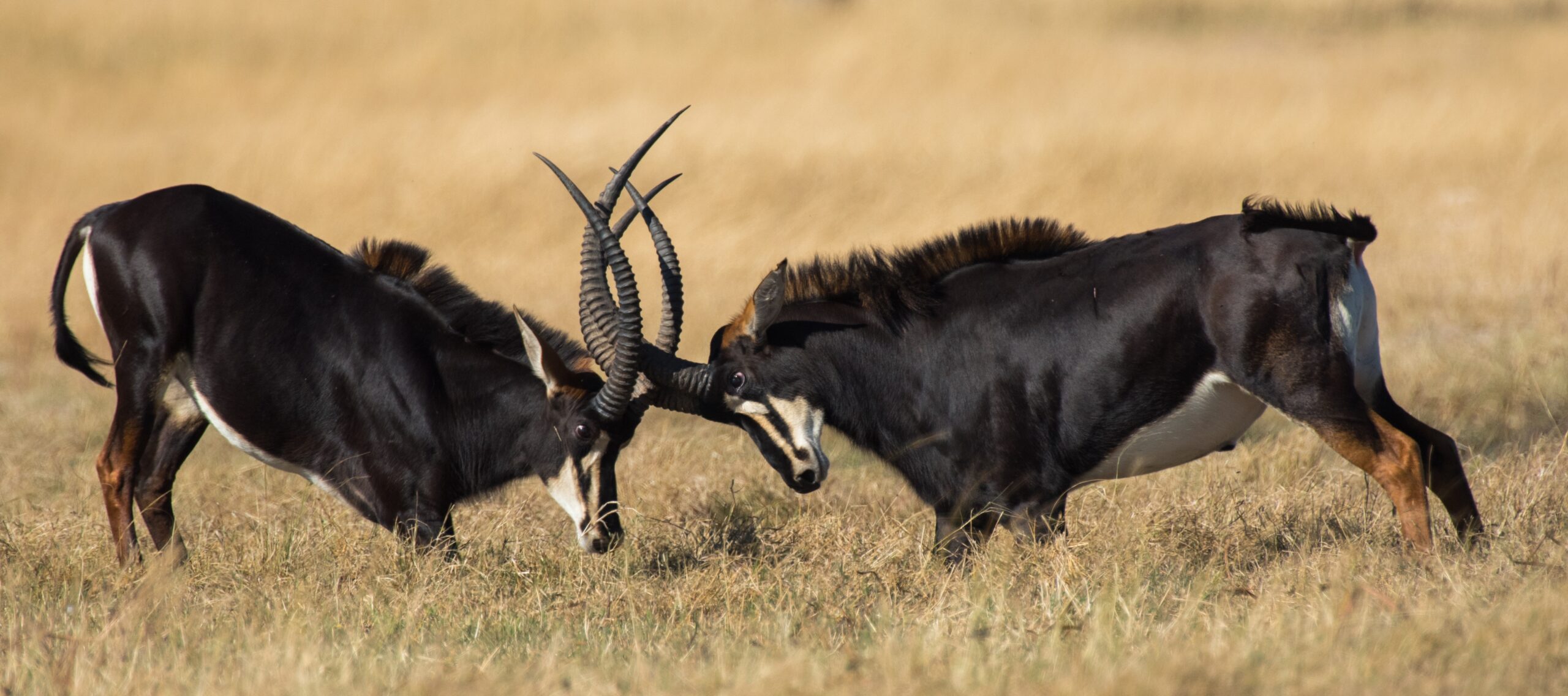
Hwange National Park, Zimbabwe’s largest national park, spans approximately 14,600 square kilometres and is located on the border with Botswana. Historically, the area was inhabited by the San bushmen and the Nhanzwa people and served as the royal hunting grounds for the Matabele king, Mzilikazi. It was officially gazetted for wildlife conservation in 1928.
Hwange is renowned for its impressive wildlife diversity, being home to over 100 mammal species and 400 bird species. The park is particularly famous for its large elephant population, which has grown to more than 20,000 individuals. It is also one of the best places to see the rare sable antelope and hosts one of the largest populations of African wild dogs. Visitors can frequently see large prides of lions and herds of buffalo, along with other predators such as cheetahs and spotted hyenas. The park also harbours the elusive brown hyena, a species rarely seen in other parts of Africa.
A distinctive feature of Hwange is its reliance on a network of waterholes, as the park lacks permanent surface water. These waterholes, crucial for the survival of the park’s wildlife, are maintained year-round by the Friends of Hwange, especially during drought years. This maintenance ensures that animals have access to water and provides excellent game-viewing opportunities as wildlife congregates at these essential points.
The park’s landscape is diverse, encompassing dense teak forests in the north, Kalahari sandveld in the south, and a mix of open grassy plains, mopane woodlands, and ilala palms. This variety in habitats supports a rich tapestry of wildlife.
Hwange’s seasonal changes are significant. The wet season, from December to March, transforms the landscape, causing wildlife to disperse. In contrast, the dry season, from June to October, sees the bush thinning out and water becoming scarce, concentrating animals around the remaining waterholes. This period is ideal for wildlife spotting.
The park’s private concessions, where many lodges and camps we recommend are situated, offer an exclusive experience, including day and night game drives and walking safaris. These areas provide a more intimate and uncrowded experience of Hwange’s diverse ecosystems.
Notably, while rhinos are currently absent from the main park, the Community Rhino Conservation initiative is working towards their reintroduction in a protected sanctuary on the park’s boundary. This initiative aims to restore rhino populations and enhance conservation efforts in the region. A second sanctuary is due to open in 2024.

Situated in the heart of the Zambezi Valley, Mana Pools National Park lies on the middle reaches of the Zambezi River, approximately 100 kilometres downstream from Lake Kariba. The park’s name, “Mana,” derives from the Shona word for “four,” referring to the park’s four main pools: Main, Chine, Long, and Chisambik. These pools are remnants of ancient oxbow lakes, and they are a vital feature of this UNESCO World Heritage site.
Mana Pools is renowned for its stunning scenery, featuring the broad flowing Zambezi River, extensive floodplains, riverine forests, and majestic acacia trees. The backdrop of the Rift Valley escarpment in Zambia adds to the park’s dramatic landscapes. Covering 2,000 square kilometres, much of the park is only accessible on foot, preserving its unspoilt nature and making it an adventurous destination for intrepid travellers.
The park is famous for its rich wildlife, especially during the dry season when large herds of elephant, buffalo, hippo, and eland congregate along the river. The protein-rich seed pods of the ana trees are a favourite food for elephants, which are frequently seen standing on their hind legs to reach these nutritious treats. Mana Pools is also home to a variety of predators, including lions and the Endangered African wild dog. The birdlife is equally impressive, with numerous species thriving in this biodiverse habitat.
Mana Pools offers a variety of experiences depending on where you stay. Inland camps, often referred to as offering ‘armchair safari’ experiences, provide excellent wildlife viewing from the comfort of the camp, particularly during the height of the dry season when animals are drawn to the remaining water sources. In contrast, the bush camps and lodges along the riverside offer a range of activities including walking safaris and canoeing, which allow for intimate encounters with the park’s fauna.
The park is renowned not just for its wildlife but also for its expert guiding. Personalities like Nick Murray of Vundu Camp, known for his expertise with wild dogs, and Stretch Ferreira of Goliath Safaris, famed for his knowledge of the old bull elephants, offer unparalleled experiences. These guides’ deep understanding of the park’s ecology and wildlife behaviour provides visitors with unique and unforgettable encounters in one of Africa’s most enchanting wilderness areas.
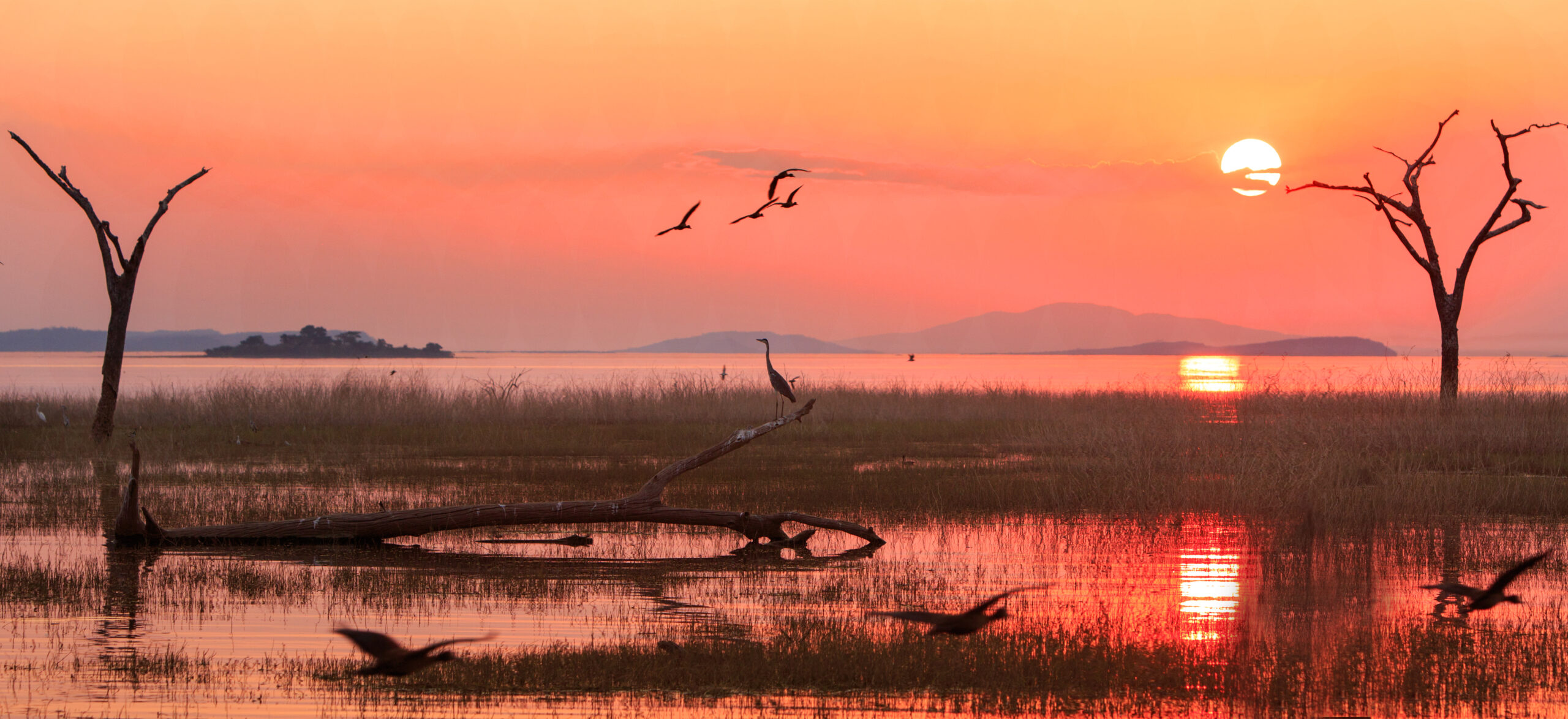
Matusadona National Park is located along the southern shores of Lake Kariba, the largest man-made lake in the world. The lake, which is 32 kilometres wide and over 220 kilometres long, was created in the 1950s by the construction of the Kariba Dam on the Zambezi River, forming a natural border between Zambia and Zimbabwe. This vast body of water is surrounded by stunning scenery, providing a serene and laid-back atmosphere ideal for relaxation and exploration.
The park, named after the Matusadona Hills, offers diverse habitats, from rugged mountains and wooded hills to extensive lake shorelines. It is home to an abundance of wildlife, including hippos, crocodiles, and a rich variety of bird species. The waters of Lake Kariba teem with fish, making it a popular spot for fishing enthusiasts. Boat trips are a wonderful way to explore the park, offering unique perspectives of the landscape and the chance to see wildlife up close.
One of the park’s significant conservation efforts is the Intensive Protection Zone (IPZ) for black rhinos. This area is dedicated to the protection and management of a small but growing population of rhino.
Visitors to Matusadona can also enjoy activities such as canoeing, which allows for intimate wildlife encounters and a peaceful way to appreciate the natural beauty of the lake and its surroundings.
A few nights at the stylish Bumi Hills, with its glorious lake views, or at the more rustic Musango Safari Camp on the western shore, provide wonderful ways to experience and explore this scenic place.
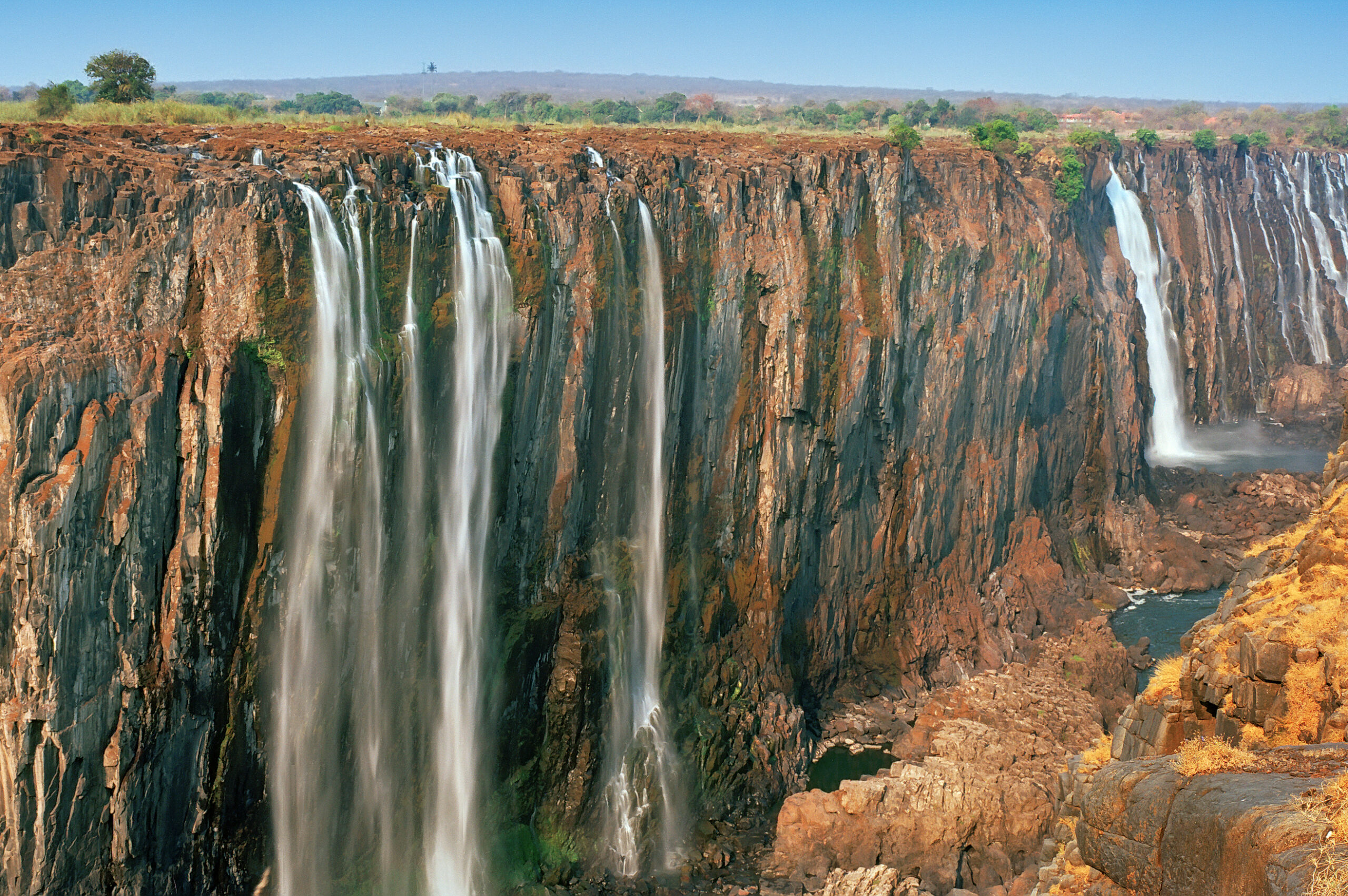
The best time to visit Victoria Falls and Zimbabwe’s national parks varies depending on your interests.
The dry winter months from May to September offer warm days with temperatures ranging from 23-28 degrees Celsius on average, and cool nights. During this period, wildlife increasingly congregates around water sources, and the reduced vegetation makes game viewing easier. Victoria Falls is particularly majestic during this time, with mid to low water levels ensuring the spray does not obscure the view. Optimum wildlife viewing is likely to be July-October.
October is the hottest month, with temperatures reaching up to 33 degrees Celsius, leading into the wet summer season. Flow of the falls can be greatly rediced by November, exposing the red basalt rock formations.
The rainy season, peaking between December and February, transforms the landscape into a lush, green paradise, making it a prime time for birdwatching and witnessing the birth of many young animals. This period also provides a unique perspective of Victoria Falls, as the increased water flow enhances the grandeur of the waterfall, though the spray can limit visibility – water flow usually peaks around March/April time.


 Victoria Falls, a UNESCO World Heritage site and one of the Seven Natural Wonders of the World, is shared between Zimbabwe and Zambia. The Zimbabwean side offers a particularly immersive experience, boasting 16 designated viewpoints along the Victoria Falls Rainforest Walk. This route provides visitors with some of the best perspectives of the falls, including iconic sections like Devil’s Cataract, Main Falls, Horseshoe Falls, and Rainbow Falls. The rainforest walk spans approximately 3.9 kilometres, with the path kept perpetually lush and misty by the falls’ spray, creating a unique microclimate rich with diverse flora and fauna.
Victoria Falls, a UNESCO World Heritage site and one of the Seven Natural Wonders of the World, is shared between Zimbabwe and Zambia. The Zimbabwean side offers a particularly immersive experience, boasting 16 designated viewpoints along the Victoria Falls Rainforest Walk. This route provides visitors with some of the best perspectives of the falls, including iconic sections like Devil’s Cataract, Main Falls, Horseshoe Falls, and Rainbow Falls. The rainforest walk spans approximately 3.9 kilometres, with the path kept perpetually lush and misty by the falls’ spray, creating a unique microclimate rich with diverse flora and fauna.